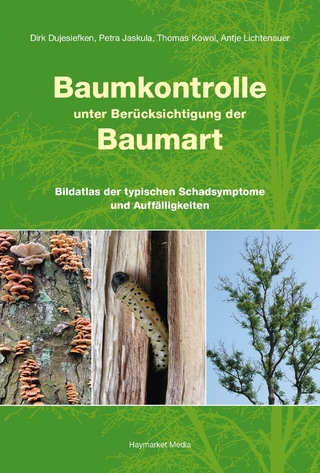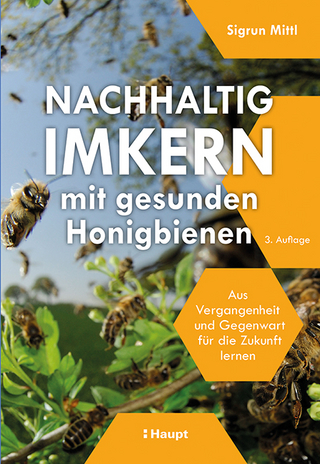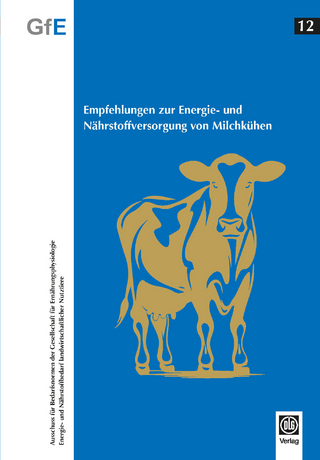
Fish and Fisheries in Estuaries, 2 Volume Set
Wiley-Blackwell (Verlag)
978-1-4443-3667-2 (ISBN)
Thirteen in-depth chapters and two method appendices examine major aspects of fish and fisheries in estuaries throughout the world. The text describes the biology of estuarine fish and their connections with estuarine and adjacent marine and freshwater ecosystems, as well as examining the ways human industrialization and global events such as climate change are impacting both native and non-native species. Topics include habitat diversity, fish foraging behavior, ecological engineering tools and models, hazards and risks to estuarine fish and fisheries, and estuarine environmental health. Offering detailed information on the biology and ecology of estuarine fish and fisheries, this authoritative reference:
Explores current approaches and future research directions aimed at achieving a balance between exploitation and conservation of estuarine fishes
Discusses environmental quality objectives and sustainable management of estuary fisheries
Addresses the impacts of increased human use of resources such as food, space, and water to estuarine fish and fisheries
Features numerous international case studies of management of fisheries, threatened species, estuarine rehabilitation, reproduction and ontogeny, and others
Covers study and sampling methods, field equipment, and data processing, analysis, and interpretation
Fish and Fisheries in Estuaries: A Global Perspective is an indispensable tool and reference point for fish biologists, fisheries scientists, ecologists and environmental scientists, aquatic ecologists, conservation biologists, estuarine managers and advanced students and instructors in fish biology and fisheries programs.
Alan K. Whitfield, Emeritus Chief Scientist, South African Institute for Aquatic Biodiversity (SAIAB), Grahamstown, Eastern Cape Province, South Africa Kenneth W. Able, Professor Emeritus, Marine Field Station, Rutgers University, Tuckerton, New Jersey, USA Stephen J. M. Blaber, Honorary Fellow, CSIRO Marine Research, Brisbane, Queensland, Australia Michael Elliott, Director, International Estuarine & Coastal Specialists Ltd, Leven, UK and Professor in Estuarine & Coastal Sciences, University of Hull, Hull, UK
Dedication
Preface
Author Details
Acknowledgements
Chapter 1: Introduction
1.1 Scope of the book
1.2 Reasons why this synthesis is important
1.3 Estuary definition and types
1.4 Chapter descriptions
1.5 Conclusions
1.6 References
Chapter 2: Fish Assemblages and Functional Groups
2.1 Introduction
2.2 Zoogeography and estuarine fish assemblages
2.3 Estuarine typology and fish assemblages
2.4 Fish guilds and functional groups
2.4.1 Estuarine Use Functional Group (EUFG)
2.4.2 Feeding Mode Functional Group (FMFG)
2.4.3 Reproductive Mode Functional Group (RMFG)
2.5 Do functional groups drive fish assemblage structure?
2.6 Fish functional groups and guild analyses
2.7 Acknowledgements
2.8 References
Chapter 3: Reproduction, Ontogeny and Recruitment
3.1 Introduction
Scope of the Chapter
3.2 Estuarine support of reproduction and recruitment
3.2.1 Replenishment: modes and patterns
3.2.1.1 Modes of reproduction
3.2.1.2 Early life stages and nurseries
3.2.2 Sources of variability in reproductive success and recruitment
3.2.2.1 Habitat and water quality
3.2.2.2 Hydrography and physics
3.2.2.3 Foods of early life stages
3.2.2.4 Predators
3.2.2.5 Weather, climate and estuarine change
3.3 Early-life stages and recruitment dynamics
3.3.1 Dispersal, transport and retention
3.3.1.1 Offshore to estuary transport processes
3.3.1.2 Swimming as a transport mechanism
3.3.1.3 Near- and within-estuary transport processes
3.3.1.4 Retention: estuarine features and processes
3.3.2 Settlement
3.3.3 Larval and juvenile production processes
3.3.3.1 Larval feeding
Ontogenetic shifts and feeding success
Nutritional considerations
3.3.4 Larval and juvenile production: growth and mortality
3.3.4.1 Rates and variability
Stage durations
3.3.4.2 Predation
3.3.4.3 Environmental factors
3.4 Adults and recruitment
3.4.1 Adult stock
3.4.1.1 Stock structure, contingents and cohorts
3.4.1.2 Maternal effects
3.4.2 Scales and patterns of variability in reproductive success
3.4.2.1 Recruitment levels and variability
3.4.2.2 Adult stock and recruitment
3.4.2.3 Predicting and forecasting recruitment
3.4.3 Recruitment: an integrated, evolved process
3.5 Threats to reproduction and recruitment in estuaries
3.5.1 Excessive fishing: depletion of adults and bycatch of juveniles
3.5.2 Habitat destruction and degradation
3.5.3 Impoundments and flow regulation
3.5.4 Power plants
3.5.5 Estuary contaminants, water quality degradation
3.5.6 Eutrophication
3.5.7 Climate change
3.5.8 Catastrophic events
3.6 Case Studies
3.6.1 Pleuronectiformes
3.6.2 Sciaenidae
3.6.3 Anchoa mitchilli (Engraulidae)
3.6.4 Brevoortia tyrannus and Brevoortia spp. (Clupeidae)
3.6.5 Morone saxatilis (Moronidae)
3.6.6 Gadidae and Clupeidae (Baltic Sea)
3.6.7 Lateolabrax japonicus (Lateolabracidae)
3.6.8 Fundulus heteroclitus (Fundulidae)
3.7 Summary and conclusions
3.8 Acknowledgements
3.9 References
Chapter 4: Habitat Use and Connectivity
4.1 Introduction
4.2 Habitat diversity
4.2.1 Water column habitat
4.2.2 Unstructured shallow habitats
4.2.3 Structured benthic habitats
4.2.3.1 Salt marshes
4.2.3.2 Submerged aquatic vegetation
4.2.3.3 Mangroves
4.2.3.4 Shellfish beds
4.2.3.5 Woody debris
4.2.3.6 Rocky and gravel bottoms
4.3 Geomorphological and hydrological variables
4.4. Physico-chemical variables
4.5 Dynamics of juvenile habitat use
4.5.1 Temperature effects
4.5.2 Salinity effects
4.5.3 Diadromy
4.5.4 Settlement habitats
4.5.5 Connectivity among habitats
4.5.6 Alien species
4.6 Adult habitat
4.7 Habitat fidelity and juvenile and adult fishes
4.8 Ecological context
4.9 Connectivity between estuarine, freshwater and marine ecosystems
4.9.1 Migrations into estuaries
4.9.2 Migrations out of estuaries
4.9.3 Migrations between estuaries
4.10 Conclusions
4.11 Acknowledgements
4.12 References
*Chapter 5: Feeding Ecology and Trophic Dynamics
5.1 Introduction
5.2 Fish foraging behaviour and food intake
5.2.1 Prey detection
5.2.2 Feeding periodicity
5.2.3 Food intake
5.2.4 Feeding movements and migrations
5.3 Factors influencing feeding ecology
5.3.1 Environmental factors
5.3.1.1 Water temperature, salinity and dissolved oxygen
5.3.1.2 Tidal regime and substratum composition
5.3.2 Biological factors
5.3.2.1 Body size
5.3.2.2 Ontogenetic changes in fish diets
5.3.3 Foraging specializations
5.3.4 Opportunistic versus specialised feeding
5.4 Ecotrophomorphology
5.5 Trophic categorization
5.5.1 Herbivorous species
5.5.2 Detritivorous species
5.5.3 Zoobenthivorous species
5.5.4 Zooplanktivorous species
5.5.5 Piscivorous species
5.5.5.1 Cannabilism
5.6 Competition, resource partitioning, energy flow and connectivity
5.6.1 Intraspecific and interspecific competition
5.6.2 Resource portioning
5.6.3 Energy flow and connectivity
5.7 Fishbase approach to Functional Feeding Groups
5.7.1 Example of a FFG analysis
5.8 Fish food sources in estuaries
5.8.1 Submerged macrophyte habitats
5.8.2 Emergent macrophyte habitats
5.9 Food web complexity
5.9.1 Vertical and horizontal feeding patterns by fishes
5.10 Predators of fish in estuaries
5.10.1 Invertebrates
5.10.2 Birds
5.10.3 Reptiles
5.10.4 Mammals
5.11 Effects of natural and anthropogenic perturbations on food webs
5.12 Acknowledgements
5.13 References
Chapter 6: Fishes and Estuarine Environmental Health
6.1 Estuarine environmental health: concepts, definitions and assessment
6.2 Anthropogenic pressures impacting estuarine fish assemblages
6.2.1 Habitat loss and physical degradation
6.2.2 Pollution
6.2.3 River flow regulation
6.2.4 Fisheries and aquaculture
6.2.5 Non-indigenous species
6.2.6 Climate change
6.2.7 Integration of human pressures: the global change context
6.3 Fishes biomarkers responding to human pressures
6.3.1 Fish biomarkers and biomagnification
6.3.2 Biomarkers of exposure
6.4 Fishes as biological indicators
6.5 Main methodological approaches to assess estuarine health using fish as indicators
6.5.1 Historical data and reference conditions
6.5.2 Experimental approaches
6.5.3 Environmental impact assessment and other risk assessment methods
6.5.4 Qualitative methods
6.5.5 Quantitative indicators
6.5.6 Models
6.6 Environmental health fish-based indices
6.7 Disentangling fish responses in the multi-stress context of global changes
6.7.1 Univariate approaches
6.7.2 Multivariate approaches
6.8 Future research directions
6.9 References
Chapter 7: Climate Change and Fishes in Estuaries
7.1 Introduction
7.2 Global, regional and local patterns
7.2.1 Predictors of fish taxonomic diversity at global and regional scales
7.2.2 Predictors of fish taxonomic diversity at local scales
7.2.3 Predictors of fish functional diversity at global, regional and local scales
7.3 Potential impacts of environmental/climate stressors on estuarine fish
7.3.1 Salinity and freshwater flow impacts
7.3.2 Temperature impacts
7.3.3 Dissolved oxygen impacts
7.3.4 Impacts of elevated CO2
7.3.5 Sea level rise
7.3.6 Estuary entrance channel openings and fish access
7.3.7 Disease
7.4 Climate change and fisheries in estuaries
7.4.1 Links to fisheries catches
7.4.2 Socio-economic effects and management implications
7.5 Case studies
7.5.1 Arctic
7.5.2 Temperate northern Atlantic
7.5.3 Temperate northern Pacific
7.5.4 Tropical Atlantic
7.5.5 Indo-Pacific
7.5.6 Temperate South America
7.5.7 Temperate southern Africa
7.5.8 Temperate Australia
7.6 Gaps in knowledge and future research directions
7.7 Acknowledgements
7.8 References
Chapter 8: Estuarine Degradation and Rehabilitation
8.1 Introduction
8.1.1 Hazards and risks to estuarine fish and fisheries and their habitats
8.1.2 Effects of climate change on estuarine fish and fisheries
8.1.3 Effects of estuarine degradation on ecosystem services
8.1.4 Effects of estuarine degradation on water quality and impacts on fish
8.1.5 Heavy metals
8.1.6 Organic pollutants
8.1.7 Pharmaceutical and personal care products
8.1.8 Nutrients
8.1.9 Effects on water quantity, hydropeak and flow alteration on fish
8.1.10 Effects on fishing
8.2 Estuarine restoration and habitat creation
8.3 Current practices
8.4 Ecological engineering
8.5 Contribution of modelling tools to more process-based restoration objectives
8.5.1 Introduction
8..5.2 Framework
8.5.2.1 Towards a more process-orientated approach
8.5.2.2 Towards integrated objectives
8.6 Why modelling processes?
8.6.1 Physical phenomena
8.6.2 Species use of the estuarine environment and compartmental interactions
8.6.3 Overview
8.7 Modelling tools
8.7.1 Biogeochemical modelling
8.7.2 Hydromorphological-sedimentary modelling
8.8 Life cycle modelling
8.8.1 ‘Static’ approaches: statistical habitat suitability
8.8.2 Dynamic approach: the probability to attaining suitable habitats
8.9 Food web modelling
8.10 The way forward
8.11 From theory to practice
8.11.1 A case study of restoration in the Schelde Estuary
8.11.2 Ecological restoration by opportunity: an example from the Gironde Estuary
8.11.2.1 Gironde restoration summary
8.11.3 Case study – restoration of former salt hay farms
8.11.4 Case study – habitat alteration and restoration linked to a common reed invasion
8.11.5 Restoration of whole estuaries and wetland systems
8.12 Concluding comments
8.13 Acknowledgements
8.14 References
Chapter 9: Estuarine Fisheries
9.1 Introduction
9.2 Estuarine fishery sectors
9.3 Problems and issues in fisheries
9.4 Fishery yields
9.5 Estuarine fisheries: a selection of case studies
9.5.1 Asian fisheries
9.5.1.1 The Hilsa Fishery, South Asia
9.5.1.2 The Lake Chilika Fishery, India
9.5.1.3 The Pichavaram Fishery, India
9.5.1.4 The Larut-Matang Fishery, Indonesia
9.5.2 African fisheries
9.5.2.1 The Kosi Bay Lakes Fishery, South Africa
9.5.2.2 The Sundays Estuary Fishery, South Africa
9.5.2.3 The Ébrié Lagoon Fishery, Ivory Coast
9.5.3 South and Central American fisheries
9.5.3.1 The Gulf of Nicoya Fishery, Costa Rica
9.5.3.2 The Cienaga Grande de Santa Marta Fishery, Columbia
9.5.3.3 The fisheries of Lake Maracaibo, Venezuela
9.5.3.4 The Valenca Delta Fishery, Brazil
9.5.4 Australasian fisheries
9.5.4.1 Lates calcarifer fisheries of Australia and Papua New Guinea
9.5.5 European and North American fisheries
9.6 The main fishery species in Europe and North America
9.6.1 Diadromous species
9.6.2 Marine seasonal migrants as adults
9.6.3 Marine migrants as juveniles
9.6.4 Estuarine-resident species
9.7 Connectivity
9.8 Concluding remarks
9.9 Acknowledgements
9.10 References
Chapter 10: Conservation of Estuarine Fishes
10.1 Introduction
10.2 Analysis of threats to estuarine fish conservation
10.2.1 Fisheries
10.2.2 Habitat alteration/loss
10.2.3 Water quality and quantity alterations
10.2.4 Climate change
10.2.5 Non-native species
10.3 Conservation interventions and instruments
10.3.1 Legislative frameworks
10.3.1.1 International initiatives
10.3.1.2 Regional initiatives
10.3.1.3 National initiatives
10.3.1.4 Environmental non-governmental organisations
10.3.2 Role of protected areas
10.3.3 Rehabilitation and habitat restoration
10.3.4 Catchment conservation
10.3.5 Captive breeding and stocking
10.4 Threatened species and extinction risk: some case studies
10.4.1 Estuarine pipefish Syngnathus watermeyeri
10.4.2 Ganges shark Glyphis gangeticus
10.4.3 Totoaba Totoaba macdonaldi
10.4.4 European eel Anguilla anguilla
10.4.5 Cape stumpnose Rhabdosargus holubi
10.5 Current and future challenges
10.6 Conclusions
10.7 Acknowledgements and dedication
10.8 References
Chapter 11: Non-native Species in Estuaries
11.1 Introduction
11.2 What conditions favor non-native species in estuaries?
11.2.1 Overview
11.2.2 San Francisco Estuary
11.2.3 Baltic Sea
11.2.4 Chesapeake Bay
11.2.5 Tagus Estuary
11.2.6 South African estuaries
11.2.7 Overview
11.3 What are the characteristics of successful non-native estuarine fishes?
11.3.1 General characteristics
11.3.2 Taxonomy
11.3.3 Mode of introduction
11.4 Do non-native species become integrated into the biota of estuaries?
11.4.1 Alternatives to species invasions
11.4.2 Novel species, novel ecosystems
11.4.3 Overview
11.5 How should non-native species in estuaries be managed?
11.6 How do non-native fishes fit into estuarine ecosystems?
11.7 Conclusions
11.8 Acknowledgements
11.9 References
Chapter 12: Management of Fishes and Fisheries in Estuaries
12.1 Introduction
12.2 Management background, aims and philosophies
12.2.1 Background and basis for management
12.2.2 Environmental Quality Objectives and sustainable management
12.2.2.1 Indicators and monitoring as tools in management
12.2.3 Information for estuarine management
12.2.3.1 Information needs and communicating management issues
12.2.3.2 Information and data production, use and dissemination
12.2.4 Case studies of priority issues for management
12.2.4.1 Australia
12.2.4.2 Humber (UK)
12.2.4.3 United States of America
12.3 Management of activities and habitats, monitoring and surveillance
12.3.1 Estuarine environmental management
12.3.2 Monitoring of activities for management
12.3.3 Licencing of plans and projects
12.3.4 Cumulative effects assessment
12.3.5 Management of recreational fishing
12.3.6 Management of habitats
12.3.6.1 Management of loss and gain in estuarine habitats
12.4 Management approaches at whole catchment and estuary level
12.4.1 Management of catchments
12.4.2 Whole estuary management approaches
12.4.3 Determining if estuarine management is successful
12.4.4 Estuarine management: holistic case studies
12.4.4.1 New Zealand
12.4.4.2 Japan
12.4.4.3 South Africa
12.4.4.4 Eastern United States of America
12.4.4.5 Western United States of America
12.5 Management of species and stocks/fisheries
12.5.1 Background
12.5.2 Management of species and stocks case studies
12.5.2.1 United Kingdom
12.5.2.2 Baltic Sea
12.5.2.3 Australia
12.5.2.4 United States of America
12.6 Administrative and legal aspects of managing estuarine fish ecology and fisheries
12.6.1 Governance background
12.6.2 European legislation
12.6.2.1 The Water Framework Directive
12.6.2.2 Habitat and Species Directive
12.6.3 Administrative bodies
12.6.3.1 Management authorities: the Humber Estuary, UK example
12.6.3.2 Laws and administration: the USA example
12.7 Main messages and recommendations for management
12.8 Future research into management methods
12.9 Acknowledgements
12.10 References
Chapter 13: Fish and Fisheries in Estuaries: Global Synthesis and Future Research Directions
13.1 Introduction – Changing estuarine landscapes: habitats, research and society
13.2 What fishes are in estuaries and why?
13.3 Estuarine fish recruitment and habitats – connectivity across space and time
13.3.1 Gaps in knowledge and future research directions
13.4 How much do we really understand about the role of fish in an estuarine food web?
13.4.1 Background
13.4.2 Fish food resources in estuaries
13.4.3 Factors influencing feeding movements, foraging ecology and migrations
13.4.4 Trophic categorization
13.4.5 Resource partitioning, energy flow and food web complexity
13.4.6 Gaps in knowledge and future research directions
13.5 Fishes – good indicators of environmental change?
13.5.1 Background to the integration of human pressures
13.5.2 Fishes as biological indicators
13.5.3 Environmental health fish-based indices
13.5.4 Disentangling fish responses in the multi-stress context of global changes
13.5.5 Gaps in knowledge and future research directions
13.6 Climate change and habitat degradation – a double whammy for fish in estuaries?
13.6.1 Background
13.6.2 Climate change
13.6.3 Habitat degradation
13.6.4 Gaps in knowledge and future research directions
13.7 Estuarine species are invading and shifting their distributions
13.7.1 Invasions of non-native species
13.7.2 The ebb and flow: geographical expansion and contraction of species
13.7.3 Gaps in knowledge and future research directions
13.8 The importance and future of fisheries in estuaries – societal goods and benefits?
13.8.1 Fisheries management in the future
13.9 Estuarine fish conservation for the future
13.9.1 Gaps in knowledge and future research directions
13.10 Restoring and managing estuaries for fish, fisheries and habitats
13.10.1 Management actions for restoring and rehabilitating estuaries
13.10.2 Gaps in knowledge and future research directions
13.11 Science-for-policy and policy-for-science – role of estuarine ichthyologists?
13.12 Fish and fisheries research in estuaries – the way forward
13.13 Acknowledgements
13.14 References
Appendix 1: Study Methods I - Field Equipment, Sampling and Methods
A1.1 Introduction
A1.2 Sampling methods
A1.2.1 ‘Traditional’ sampling (nets and traps)
A1.2.1.1 Trawl nets
Beam trawl
Otter trawl
Pelagic trawl
Other trawls
A1.2.1.2 Seine nets
Beach seine
Other seine nets
A1.2.1.3 Fixed nets and traps
Fyke net
Fixed net/trap (e.g. salmon and eel traps)
Stow net
Entangling nets (gill and trammel nets)
Drop net and drop traps
Pop net and pull-up traps
Other fixed nets and traps
A1.2.1.4 Fishing lines
Long lines
Hand line
A1.2.1.5 Ichthyoplankton samplers
Vertical and horizontal plankton nets
Bongo net
Gulf sampler
Larval light traps
A1.2.1.6 Power station screens
A1.2.1.7 Hand gathering methods
Glass eel tow net and elver dip net
Push net
Kick sampling
A1.2.2 Visual and acoustic methods
A1.2.2.1 Visual detection
Diving
Underwater video
A1.2.2.2 Acoustic detection
Hydroacoustics
Acoustic cameras
Acoustic telemetry
A1.2.2.3 Other observation techniques
A1.2.3 Environmental DNA methods
A1.2.3.1 DNA analysis
DNA and eDNA methods
Targeted PCR methods
High-throughput sequencing
A1.2.3.2 Strengths and disadvantages of DNA-based methods
Feasibility and costs
eDNA and the possible presence of an organism in that environment
Can eDNA provide quantitative information?
DNA techniques for environmental monitoring
A1.3 Factors influencing the design of fish monitoring programmes
A1.3.1 Monitoring techniques
A1.3.2 Spatial considerations
A1.3.3 Temporal considerations
A1.3.4 A decision tree for monitoring, surveillance and survey design
A1.3.4.1 Decision level 1: definition of main questions and hypotheses
A1.3.4.2 Decision level 2: monitoring definition
A1.3.4.3 Decision level 3: types of survey required/desired
A1.3.4.4 Decision level 4: associated parameters/integrated monitoring
A1.3.4.5 Decision level 5: methods to be used in monitoring
A1.4 Acknowledgements
A1.5 References
Appendix 2: Study Methods II - Data Processing, Analysis and Interpretation
A2.1 Introduction
A2.2 Individual level
A2.2.1 Size
A2.2.2 Age/growth determination (otoliths/scales)
A2.2.3 Diet and stomach analyses
A2.2.3.1 Prey selectivity and prey importance
A2.2.4 Sex/gonad development (Gonadosomatic Index)
A2.2.5 External bodies abnormalities and fish health
A2.2.6 Toxins and bioaccumulation
A2.3 Population level
A2.3.1 Abundance
A2.3.2 Biomass
A2.3.3 Condition, disease, parasitism, and liver somatic index
A2.3.4 Genetic structure
A2.3.5 Cohort analysis
A2.3.6 Growth, mortality rates and models
A2.3.7 Production
A2.3.7.1 Biological production
A2.3.7.2 Fisheries production
A2.3.8 Yield models
A2.3.9 Use of fishery statistics
A2.4 Community level
A2.4.1 Community structure
A2.4.2 Multi-metric fish-based indices
A2.5 General analysis methods and the role of models
A2.5.1 The types and roles of numerical models
A2.6 Precision versus accuracy – Analytical Quality Control/Quality Assurance
A2.7 Concluding comments
A2.8 Acknowledgements
A2.9 References
Fish Species Index
Geographical Index
General Index
| Erscheinungsdatum | 21.09.2020 |
|---|---|
| Verlagsort | Hoboken |
| Sprache | englisch |
| Maße | 170 x 244 mm |
| Gewicht | 3033 g |
| Themenwelt | Weitere Fachgebiete ► Land- / Forstwirtschaft / Fischerei |
| ISBN-10 | 1-4443-3667-3 / 1444336673 |
| ISBN-13 | 978-1-4443-3667-2 / 9781444336672 |
| Zustand | Neuware |
| Haben Sie eine Frage zum Produkt? |
aus dem Bereich


